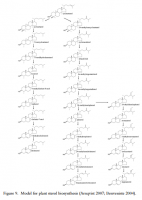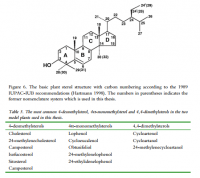Vinero
Member
You forgot the whiskey.A staple Irish diet would have been oatmeal, whole milk, lamb, potatoes and butter.
Follow along with the video below to see how to install our site as a web app on your home screen.
Note: This feature may not be available in some browsers.
Click Here if you want to upgrade your account
If you were able to post but cannot do so now, send an email to admin at raypeatforum dot com and include your username and we will fix that right up for you.
You forgot the whiskey.A staple Irish diet would have been oatmeal, whole milk, lamb, potatoes and butter.
Haha. Think it was ale actually.You forgot the whiskey.


 click to embiggen: Representative images
click to embiggen: Representative imagesI think this article would have everything you'd ever want to know about potato sterols; it is 66 pages long, single-spaced, and is actually classified as a 'book' by GoogleScholar.
I don't even think that word is part of his vocabulary.Even Ray would call you a freakin nerd!
Men are generally more visual than women. I'd be more interested in reading an erotic novel than look at pictures of naked men. Women do go to male strip shows, but more as a fun and "outrageous" thing to do for laughs, rather than to get turned on.
I've been storing them at room temperature under sunlight for all these months .
Has anyone else noticed white coating on tongue from eating potatoes? In the past, niacinamide got rid of it.
I'm considering the possibility of potatoes coating the tongue reliably. It goes away with meals of pineapple, quack cheese and honey, is kept at bay with rice and whatever and comes back with potatoes. I haven't experimented enough yet but it seems possible, so I'm sharing in case other people have noticed the same.
I've been storing them at room temperature under sunlight for all these months .
I do wonder whether the starch changes and perhaps becomes more resistant if they are stored in the fridge.
I just saw this, great minds think alike:
Well, potato agar is the most common growth medium used to culture C. albicans (both rice and corn should be a safer).
For more information from Travis, see here:Well, potato agar is the most common growth medium used to culture C. albicans (both rice and corn should be a safer).
Thanks, it sounds like drinking the broth isn't particularly safe either given it's used to create the potato agar, this being said the potatoes are not peeled for this process. I think I may reconsider my hierarchy of starchy foods anyways, at meast as an experiment.
vitamin E improve my libido back to baseline, so it's likely negative hormonal effects from the potatoes (probably the starch).
I think that it could be possible, if some of the phytosterols were act like a cortisone mimetic in the body. The case of solanine demonstrates that tubers can create mineralocorticoids, and there's little structural difference within the corticosterol class. The Irish have historically consumed white potatoes and perhaps they still do, making them a good study population. But any growth changes seen could probably just as easily be attributed to amino acid ratios or total amounts (i.e. leucine) as a counter argument. Perhaps we ought to do some calculations of the total photosterol amount per potato, sans peel, so we can gauge the plausibility of bioactive tubers?
I find potatoes fairly hard to digest. I actually find wheat to be the easiest, but there's the gluten, which often causes symptoms.Vitamin E is actually so awesome.
So I had some potatoes that were left in the fridge, and then BOOM, this morning, I woke up with LOWER abdominal irritation, like a spasm, stuck feeling, which coincides to a reduction in libido, cold extremities, weak feeling, I still can't tolerate these fkn potatoes.
Most other starch is fine, but potatoes and even sweet potatoes cause deleterious effects for me.
This increases the quantity of resistant starch significantly.... So I had some potatoes that were left in the fridge...
I find potatoes fairly hard to digest. I actually find wheat to be the easiest, but there's the gluten, which often causes symptoms.
This increases the quantity of resistant starch significantly.
Hey all,
I am seriously baffled.
How can boiled potatoes (a massive serving) result in extremely uplifting mood, but completely diminish my libido. I think I noticed this exact effect after using Elixa Probiotic | Ultra High Strength Probiotic
Other effects I notice about 2 hours after them is a reduction in body temperature.
Someone help explain the mechanism.
I have read about possible endotoxin, but I seriously feel like there's something going on.